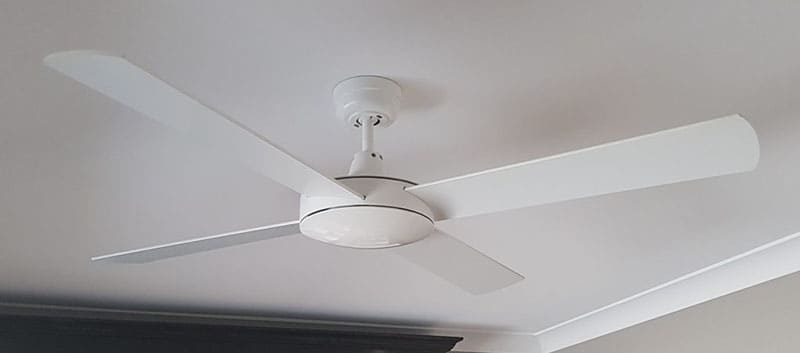How to choose a ceiling fan
Ceiling fans come in all different shapes, sizes, materials and colours. With so many things to consider, choosing the right one for your home can be difficult and confusing. Here are some of the important features of ceiling fans to review before purchasing one.
How to pick the right ceiling fan size
Probably the most important part of purchasing a ceiling fan is making sure it’s the right size. Obviously, the fan will have to be high enough not to be a hazard, but the height at which your fan is positioned above the floor will affect its efficiency and quality. For most fans, 2.4 metres is usually the optimum clearance distance. Extension rods can be purchased with a fan to ensure it is lowered adequately.
The blade span is another notable sizing factor for fans and should be considered for each type of room you wish to install a ceiling fan. For example, smaller rooms like bathrooms or home offices sizing up to 7 square metres should have fans with a blade span between 74 and 91 centimetres. Whereas blade spans of 132 to 142 centimetres are better suited to large bedrooms and family rooms.

Ceiling fan design and control settings
There are a number of variations of indoor and outdoor ceiling fans available for purchase. The blade can be made out of stainless steel, aluminium, wood and plastic. Some people require ceiling fans with lights due to where they position them in their homes.
The control settings of a ceiling fan are also important to take into account when buying a fan. The three main types of fan control are,
- Remote control
- Wall based switches
- Pull-cord
Remote control and wall switches are more common in newer homes due to their discrete look. Remote controls are definitely a more convenient way of controlling your fan as they enable you to change your fan setting without getting up. The pull cord style system is simpler and more of an old-school design but is still seen in many homes.
AC or DC ceiling fans?
Fans can either use an AC or DC current. Ac is less common in modern homes and is a cheap option. AC fans only have three control speeds. DC fans have up to seven settings and can have a reverse setting. They do lower the running cost by using a direct current that improves the efficiency of the fan.
What is the difference between summer and winter fans?
Summers fans rotate anticlockwise, which circulates cool air around the room. This creates a cool breeze-like feeling in the room and spreads the cooler air, which consequently cools the whole room.
Winter fans spin the opposite way (clockwise), at a low speed, so that the warm air above the fan is mixed in with the cooler air in the room. If a summer fan is used on the lowest setting it can also have a similar effect. Some DC fans have a reverse speed for winter.
Ceiling fan installation
Wall switch fans often require advanced electrical wiring that should only be carried out by a licensed electrician. It is recommended that pull cord and wall-based switch fans are also installed by a licensed electrician. For any ceiling fan installation enquiries contact us today or fill out our online electrician booking form.
Contact us today.
We offer obligation-free quotes, and guarantee all of our workmanship 100%. For more information about our services, please contact our team today.
